Sightseeing Places in Fukuoka
Welcome to Fukuoka!
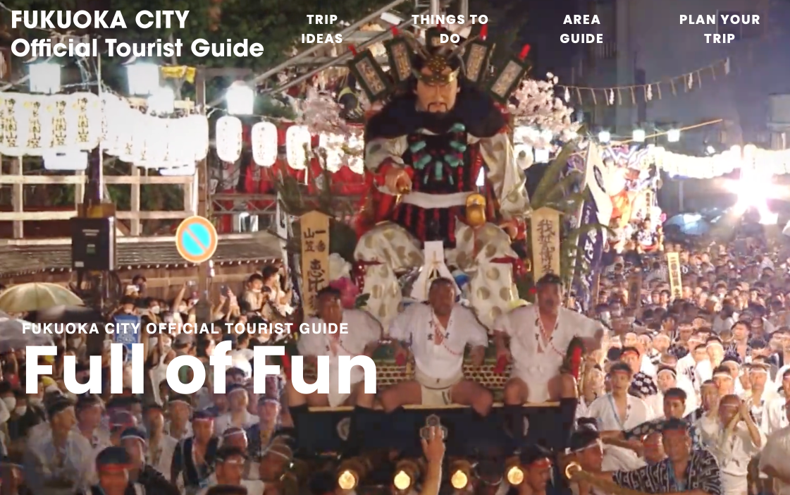
Fukuoka, located in the southwest of Japan, is a dynamic city known for its rich culture, beautiful nature, delicious food, and warm hospitality. It’s a perfect blend of traditional charm and modern convenience - all within easy reach.
There are many exciting places to explore during your stay for AAPPS-DPP2025.
We hope you’ll take some time between sessions to enjoy what the city has to offer.
To start, we recommend visiting the FUKUOKA CITY Official Tourist Guide.
You’ll find helpful information about sightseeing spots, food, events, and more.
FUKUOKA CITY Official Tourist Guide Website
Explore More of Fukuoka
On this AAPPS-DPP website, we’re excited to introduce you to some of Fukuoka’s many highlights. Whether you’re into history, nature, food, or pop culture, there’s something here for you.
- Dazaifu Tenmangu Shrine: One of the most famous shrines in Japan, dedicated to the deity of learning.
- Kyushu National Museum:A beautiful modern museum located next to Dazaifu Shrine, offering deep insights into Japanese and Asian history.
- Fukuoka Castle Ruins: A scenic historical site located within Maizuru Park.
- Fukuoka Tower: The tallest seaside tower in Japan with a stunning view of the city and ocean.
- Ohori Park & Fukuoka Art Museum: A peaceful park with a central lake, perfect for a walk or a visit to the nearby art museum.
- Kushida Shrine:A historic Shinto shrine in the heart of Hakata, known for its role in local festivals.
- Yatai (Food Stalls): Enjoy Fukuoka’s iconic street food culture, especially at night.
- Hakata Station:More than just a train station ? it’s a shopping and dining hub, and home to Pokemon Center Fukuoka!
- Canal City Hakata: A large shopping and entertainment complex featuring a Gundam Base shop, a JUMP Shop, and a popular fountain show.
- LaLaport Fukuoka: Don’t miss the real-size RX-93ff v Gundam. Life-size Gundams can only be seen in Fukuoka, Tokyo, Shanghai - and now also at the Osaka Expo. It’s definitely worth a visit.
- Fukuoka City Museum: Learn about Fukuoka’s rich history and culture in a modern, well-curated museum.
- Nokonoshima Island:Take a short ferry ride and enjoy seasonal flowers and beautiful coastal scenery.
Dazaifu Tenmangu Shrine
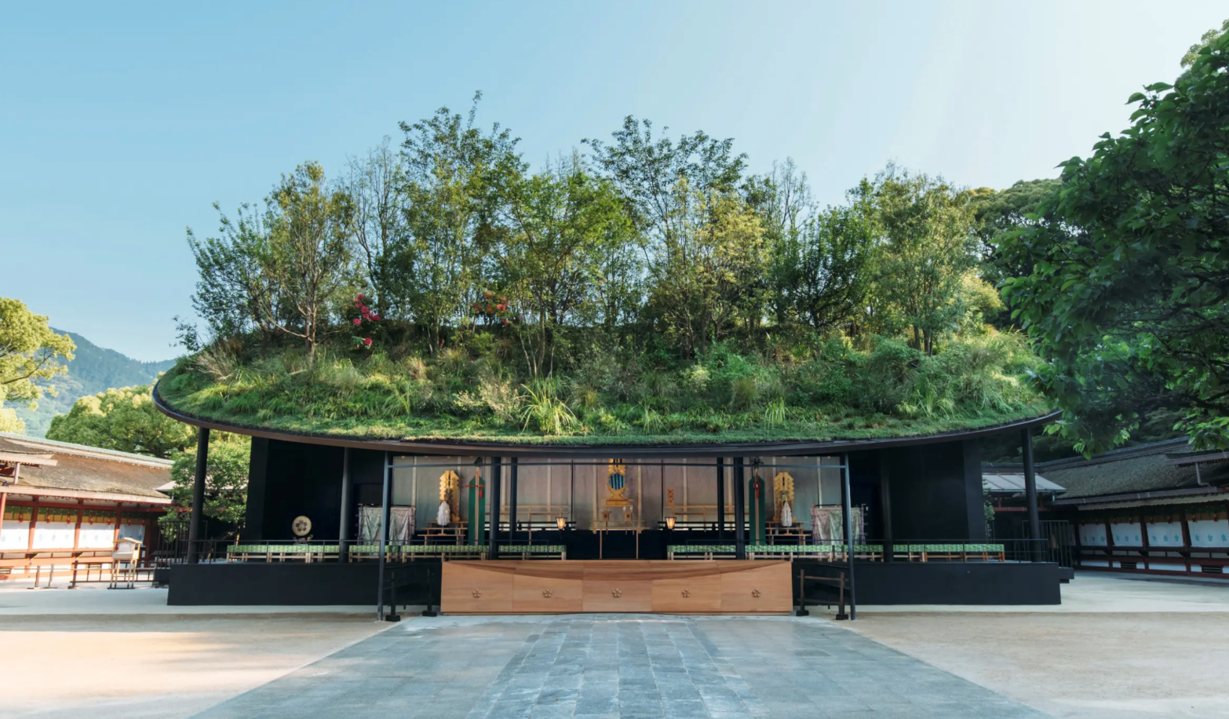
One of the most important Shinto shrines in Japan, Dazaifu Tenmangu is dedicated to the deity of learning, Sugawara no Michizane, revered by students and scholars. It serves as the head shrine of over 12,000 Tenmangu shrines across Japan and attracts visitors from all over the country and abroad.
Currently, the shrine’s main hall (an Important Cultural Property) is undergoing a once-in-a-century renovation called the “Reiwa Restoration.” In the meantime, a beautifully designed temporary main hall (kariden) has been constructed, offering a rare and special experience for visitors.
The shrine grounds feature seasonal flowers including plum blossoms (Michizane's favorite), irises, and camphor trees-some of which are designated natural monuments. Among them is the legendary Tobiume, a plum tree said to have flown overnight from Kyoto to accompany Michizane to Dazaifu. This sacred tree stands beside the main hall and is a major highlight during plum blossom season.
Also located nearby is Kamado Shrine, situated at the entrance to Mount Homan (Homanzan), considered the spiritual guardian of Dazaifu. Interestingly, it shares the name "Kamado" with Tanjiro Kamado, the main character of the popular anime Demon Slayer, drawing fans to this rare and scenic spot.
Dazaifu Tenmangu Official WebsiteAccessFrom Nishitetsu Fukuoka (Tenjin) Station: Take the Nishitetsu Tenjin-Omuta Line to Nishitetsu Futsukaichi Station,
then transfer to the Dazaifu Line and get off at Dazaifu Station.
Alternatively, you can take a direct bus from Hakata Bus Terminal to Dazaifu.
Kamado Shrine Official WebsiteKyushu National Museum
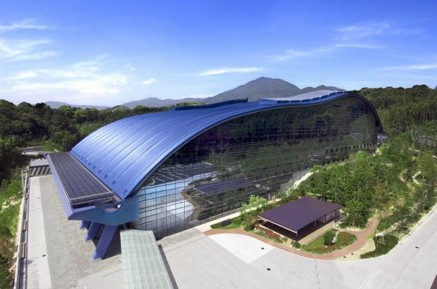
Located just behind Dazaifu Tenmangu Shrine, the Kyushu National Museum is one of only four national museums in Japan and the first to focus on the history of cultural exchange between Japan and other Asian regions.
The museum's architecture is striking, featuring a sweeping glass facade that blends beautifully into the forested hillside. Inside, the permanent exhibition, “Cultural Exchange Exhibition Hall”, traces Japan's historical ties with China, Korea, Southeast Asia, and beyond. The displays are visually impressive and thoughtfully curated, with many multilingual explanations and digital interactive elements.
Special exhibitions are also held regularly, offering a closer look at ancient artifacts, artworks, and themes ranging from samurai to contemporary culture.For a relaxing break, the museum cafe and gift shop are also worth a visit. The museum is connected to Dazaifu Tenmangu by an escalator and walkway, making it easy to visit both on the same trip.
Kyushu National Museum Official WebsiteAccessTake the Nishitetsu train from Tenjin (Nishitetsu Fukuoka Station) to Nishitetsu Futsukaichi Station, then transfer to the Dazaifu Line and get off at Dazaifu Station. From there, it's about a 5-minute walk (via covered walkway) to the museum.
You can also take a direct bus from Hakata Bus Terminal to Dazaifu and walk from the shrine.Fukuoka Castle Ruins
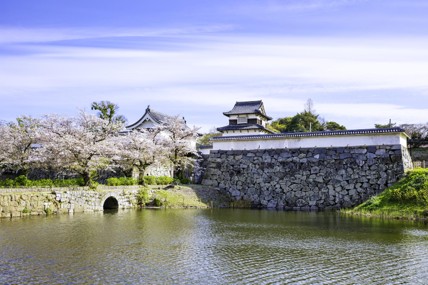
Located in Maizuru Park, the Fukuoka Castle Ruins are the remains of a large Edo-period castle once built by Lord Kuroda Nagamasa (Kuroda Kanbei). While much of the original structure is no longer standing, the impressive stone walls, gates, and observation platforms offer great views of the cit - especially beautiful during cherry blossom season.
It's a peaceful spot to take a stroll, enjoy nature, and imagine the history that once unfolded here. The nearby Korokan Ruins Museum provides further insights into the area’s ancient diplomatic history.
AccessTake the subway to Ohorikoen Station on the Kudo Line. From there, it’s about a 5-minute walk to the park and castle area.
Fukuoka Tower
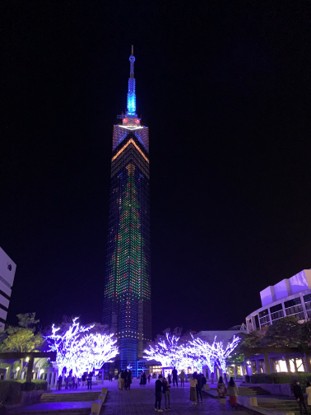
Standing 234 meters tall, Fukuoka Tower is Japan’s tallest seaside tower and one of the city’s most iconic landmarks. From the observation deck at 123 meters, you can enjoy a breathtaking panoramic view of Fukuoka’s cityscape, Hakata Bay, and even as far as the mountains on a clear day.
The tower is beautifully illuminated at night and often features seasonal light displays. It’s a popular spot for couples and tourists alike.
Fukuoka Tower Official WebsiteAccessFrom Hakata Station, take the subway to Nishijin Station (Kuko Line), then a 20-minute walk or a short bus/taxi ride.
Alternatively, take a direct bus from Hakata Bus Terminal to Fukuoka Tower (Fukuoka Tower South Exit).
Ohori Park & Fukuoka Art Museum
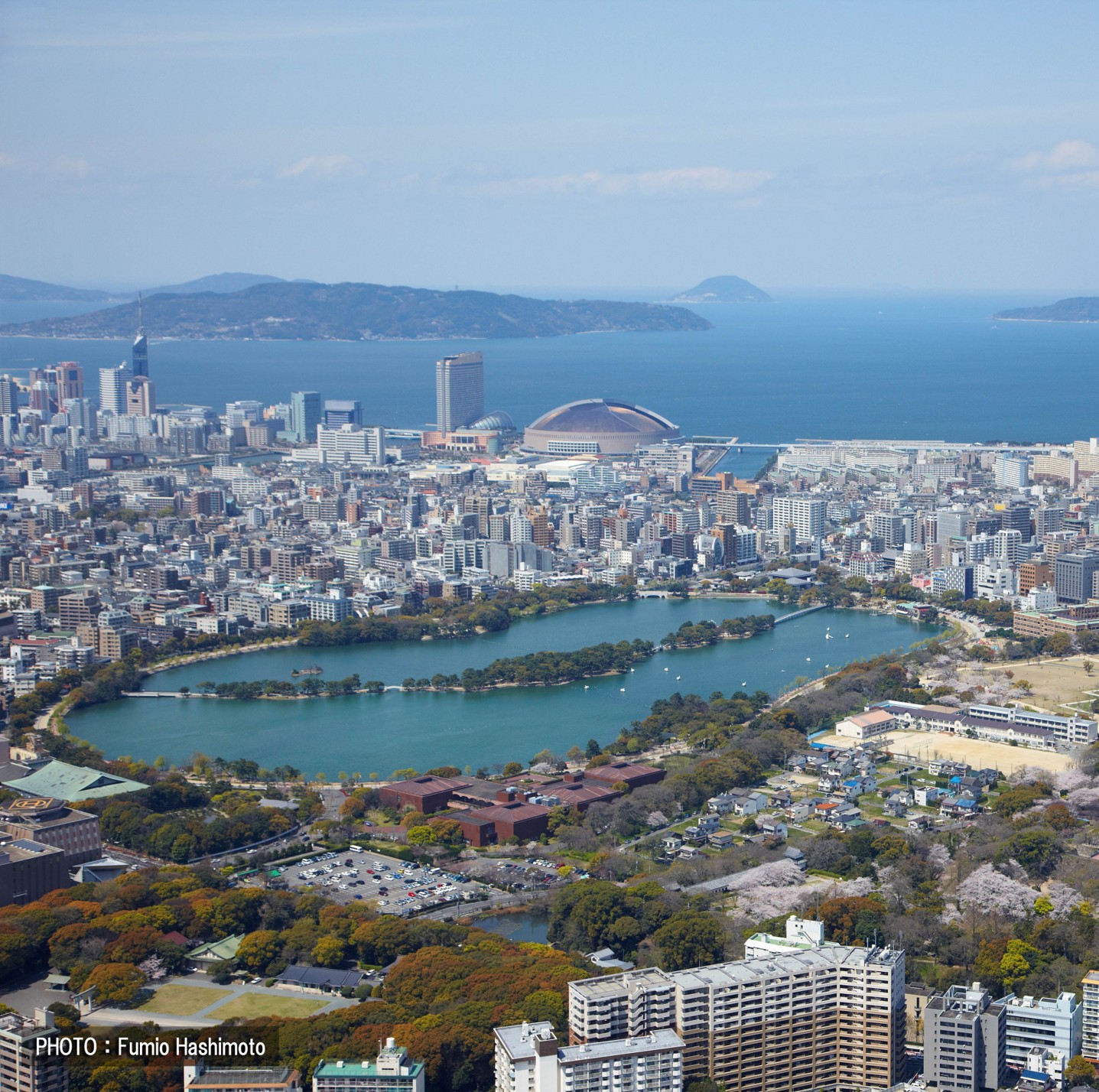
Ohori Park is one of Fukuoka’s most beautiful and relaxing public spaces, centered around a large pond that was once part of Fukuoka Castle's moat. The park features a scenic walking path that circles the water, charming bridges, Japanese gardens, and open spaces perfect for a stroll, jog, or picnic.
Located within the park is the Fukuoka Art Museum, which reopened in 2019 after major renovations. The museum houses an impressive collection of both modern and traditional art, including works by Salvador Dali and Matisse, as well as Buddhist statues and Japanese ceramics.
Whether you’re an art lover or just looking for a peaceful break in nature, this area is a must-visit.
Fukuoka Art Museum Official WebsiteAccessTake the subway to Ohorikoen Station on the Kuko Line. The park is directly accessible from the station. The museum is located within the park, about a 5-minute walk from the station exit.
Kushida Shrine
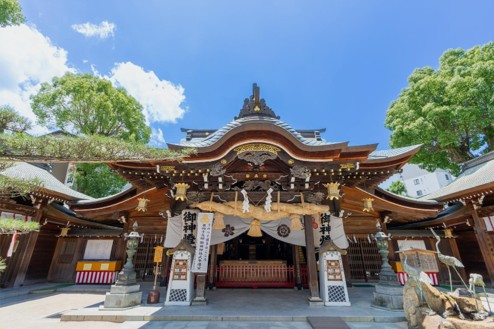
Located in the heart of Hakata, Kushida Shrine is one of Fukuoka’s most important and beloved Shinto shrines. Founded in the 8th century, it is dedicated to the gods of prosperity and long life. The shrine is especially known for its deep connection to local traditions and festivals.
One of the biggest events held here is the Hakata Gion Yamakasa, a vibrant festival with over 770 years of history. Held every July, the festival features teams of men racing through the streets while carrying elaborately decorated floats called kakiyama. Some of these floats, which can be up to 10 meters tall and weigh more than a ton, are on display at the shrine year-round - making it a great place to visit even outside the festival season.
Kushida Shrine is also a place where locals pray for good fortune, business success, and safe travels. The blend of spiritual significance and cultural vibrancy makes this shrine a must-see for visitors.
AccessTake the subway to Gion Station on the Kuko Line. It’s about a 5-minute walk from Exit 2. It’s also walkable from Canal City or Hakata Station (15-20 minutes).
Yatai (Street Food Stalls)
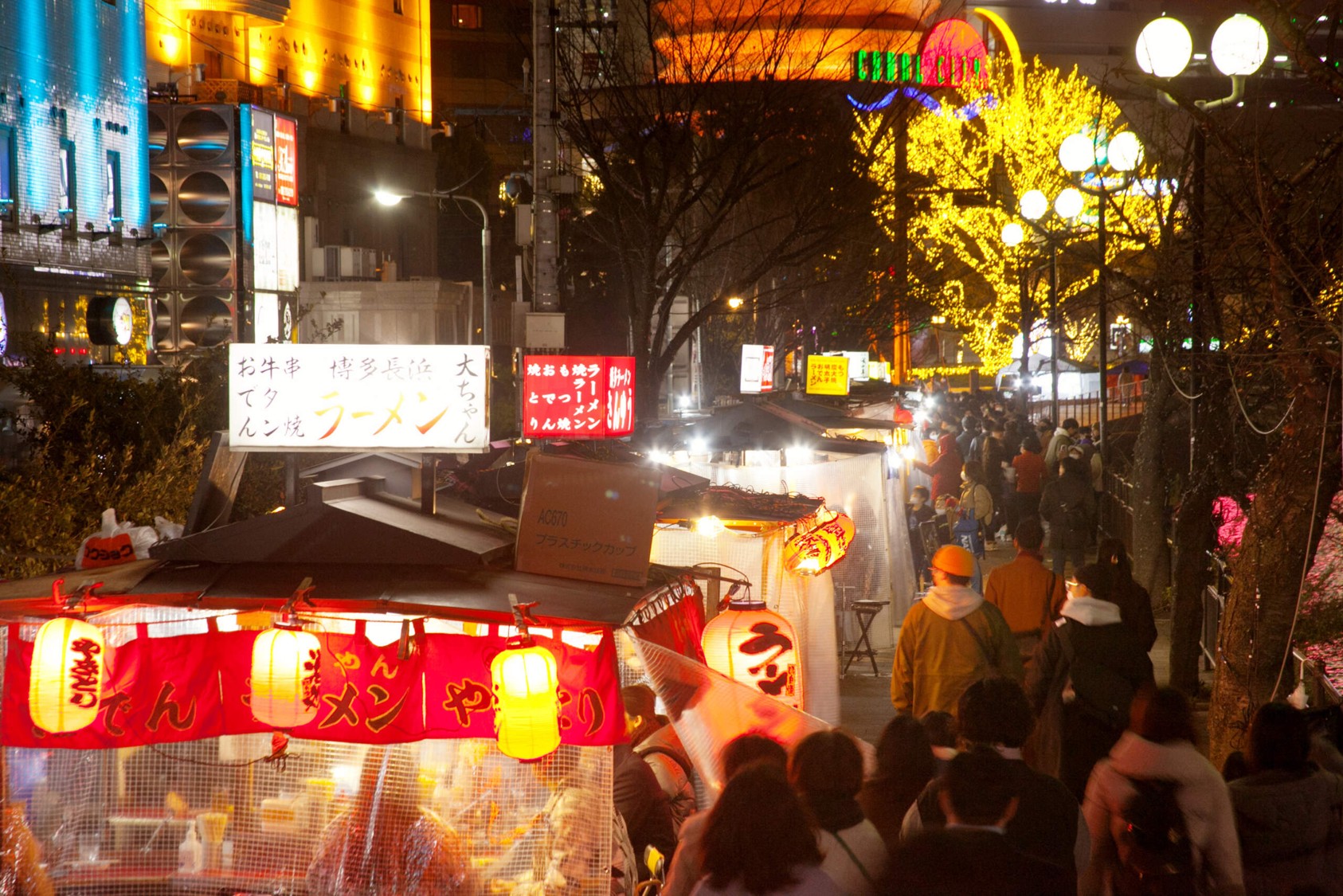
One of Fukuoka’s most iconic experiences is eating at a yatai - open-air street food stalls that come to life in the evening. These small mobile eateries offer a cozy, social atmosphere and a chance to enjoy local dishes alongside locals and travelers alike. You'll find yatai mainly in areas like Nakasu, Tenjin, and near Nagahama. Each stall typically seats about 8-10 people, and menus range from ramen (especially Hakata-style tonkotsu pork broth) to grilled skewers, tempura, oden, and even Western-style dishes. More than just a meal, yatai offer a uniquely Fukuoka-style nightlife experience ? casual, friendly, and full of local flavor.
- Tips:
- Most yatai open around 6:00 PM and operate until midnight or later.
- Seating is first-come, first-served.
- Some stalls accept credit cards, but cash is still preferred.
- Nakasu Riverside (most famous yatai area)
- Tenjin area (e.g., near Tenjin Central Park)
- Nagahama (known for Nagahama-style ramen) For food lovers, trying yatai is a must-do in Fukuoka!
Where to go:
Hakata Station
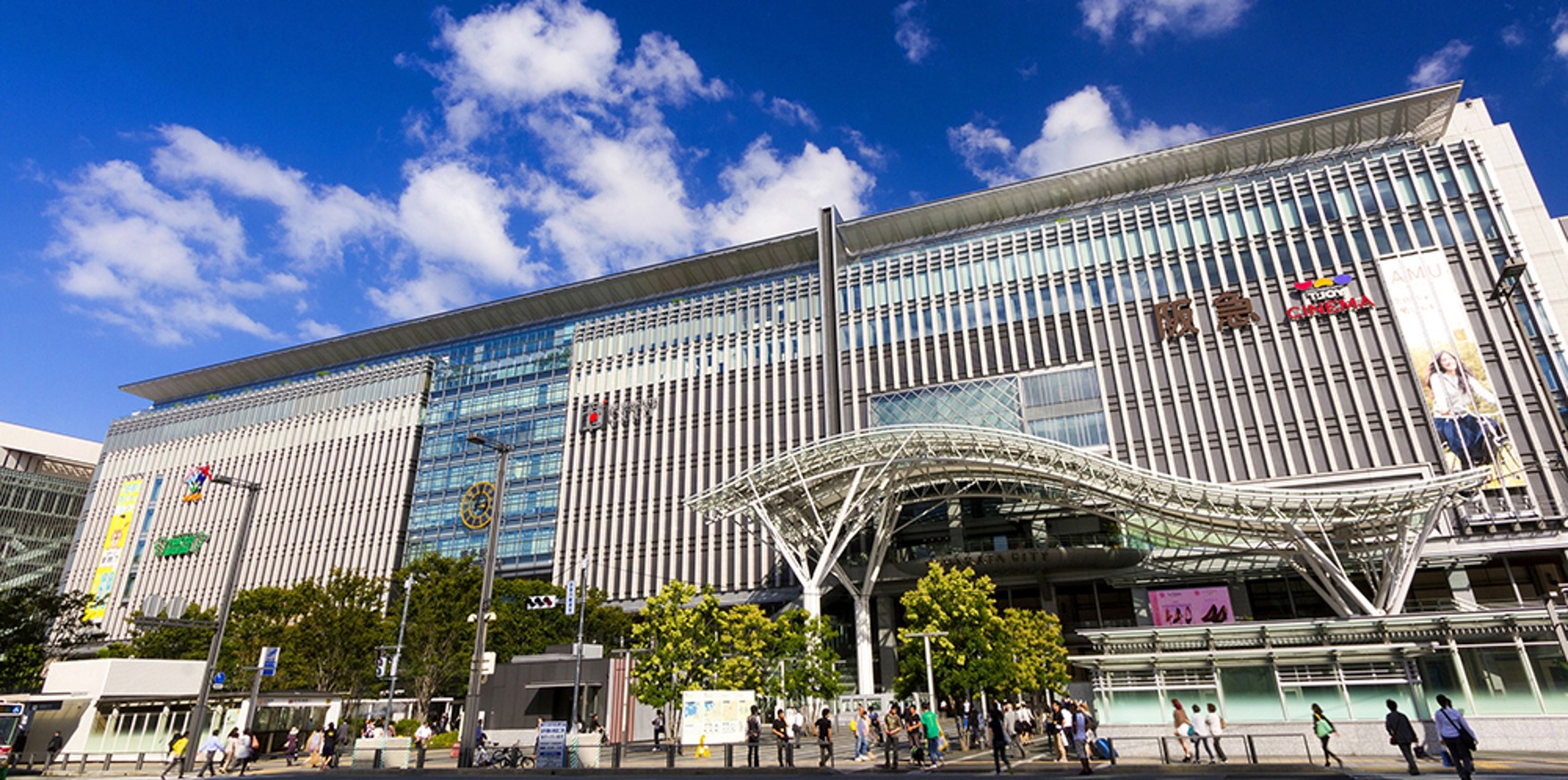
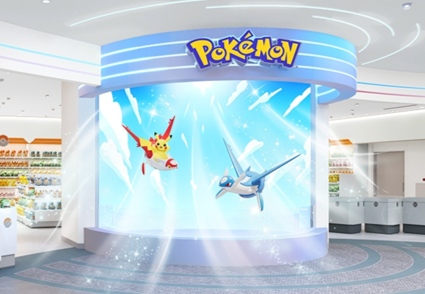
Hakata Station is more than just a major transportation hub - it's the beating heart of Fukuoka. As the gateway to Kyushu, the station connects local subway lines, JR trains, and the Shinkansen (bullet train), making it incredibly convenient for both local travel and long-distance trips.
But Hakata Station is also a destination in itself. The connected JR Hakata City complex features shopping malls, restaurants, cafes, and rooftop gardens. You can sample a wide range of local cuisine, buy souvenirs, or simply relax while enjoying the view from the Tsubame-no-Mori Sky Garden on the roof.
For fans of Japanese pop culture, Hakata Station is also home to the Pokemon Center Fukuoka in Hakata Marui 2F, where you can find exclusive merchandise and character-themed experiences.
Canal City Hakata
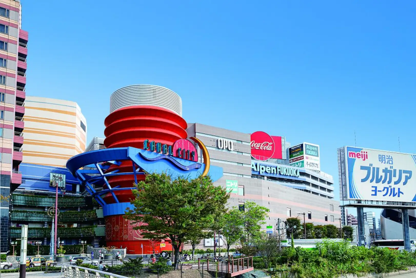
Nicknamed a “city within a city,” Canal City Hakata is one of Fukuoka’s largest and most unique shopping and entertainment complexes. Built around an actual canal that runs through the center of the facility, this colorful, open-air space offers something for everyone - shopping, dining, entertainment, and art.
Inside, you’ll find popular Japanese stores and international brands, along with themed attractions like the Gundam Base Fukuoka, the JUMP Shop (official merchandise from One Piece, Naruto, etc) and more.The highlight for many visitors is the dancing fountain show, held regularly in the central plaza with lights and music - especially beautiful at night.
With cinemas, performance theaters, a ramen stadium featuring famous noodle shops from across Japan, and family-friendly spaces, Canal City is a great place to spend a few hours ? or an entire day.
LaLaport Fukuoka
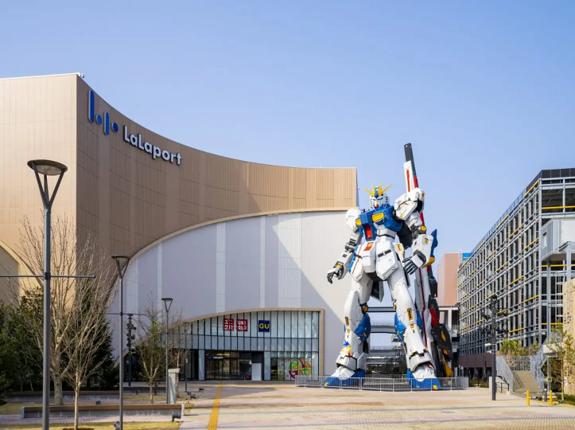
Opened in 2022, LaLaport Fukuoka is a large-scale shopping and entertainment complex that has quickly become a must-visit spot - especially for fans of Japanese pop culture.
Its biggest attraction is the life-size RX-93ff v (Nu) Gundam statue, standing 24.8 meters tall. This is one of only a few full-scale Gundams in the world, with others located in Tokyo, Shanghai, and Osaka (Expo 2025). The Fukuoka version is unique, with original coloring and special design features. Whether you're a Gundam fan or just curious, it's an unforgettable sight.
The complex also features a wide variety of shops, restaurants, a food court, and family-friendly entertainment including a cinema and sports activities.
From Hakata Station, take a bus bound for LaLaport Fukuoka-mae (about 20 minutes). Alternatively, take the JR Line to Takeshita Station and walk about 10-15 minutes.